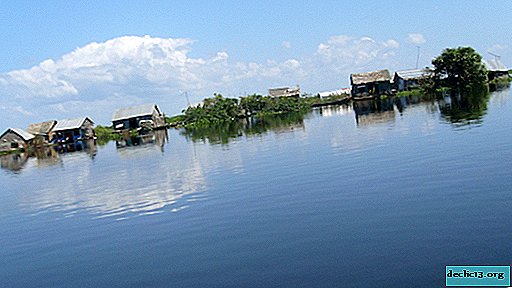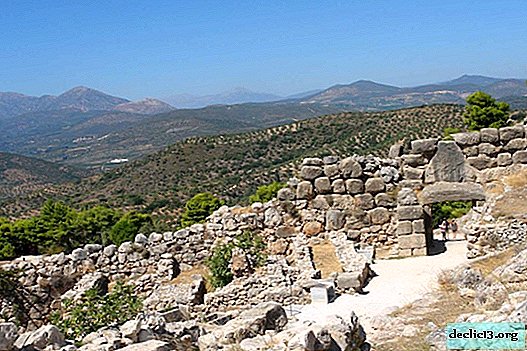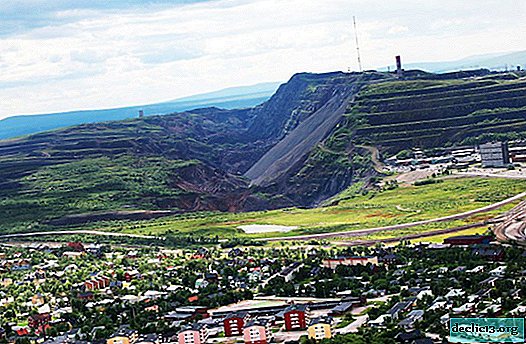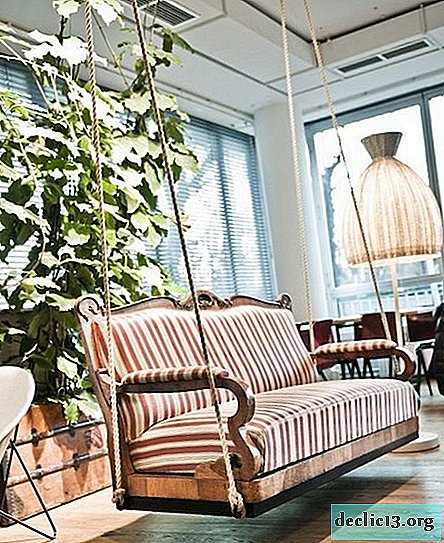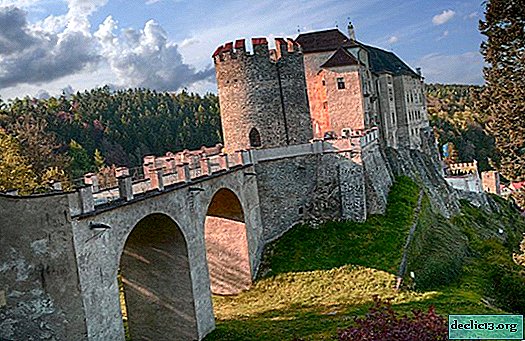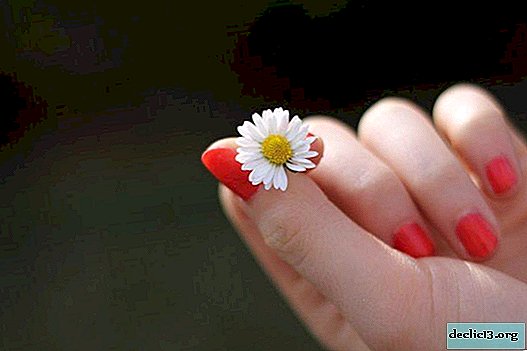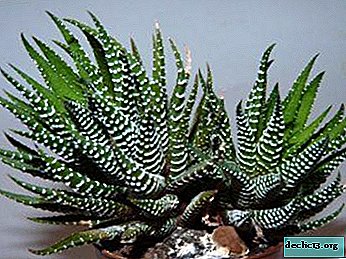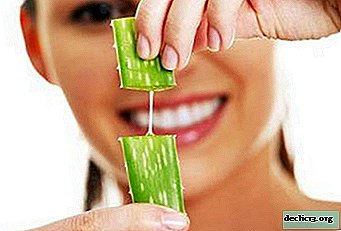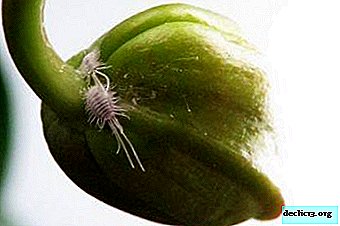The beautiful pelargonium of Lady Gertrude: features of the care, planting and reproduction of the plant

Pelargonium variety Lady Gertrude is one of the most beautiful, delicate and attractive.
The plant boasts expressive buds resembling roses and rapid growth.
In the article we will consider the features of the cultivation of pelargonium Lady Gertrude.
We will find out how to plant this plant correctly, how to subsequently care for it. And also, about the possible problems of the hybrid, diseases and pests.
Description
Pelargonium Lady Gertrude is a hybrid cultivar: the product of a cross between ivy and zonal pelargonium. As a result of breeding work, a very decorative, expressive variety was obtained that most resembles a rose.
Lady Gertrude today is a favorite of flower growers. This amazing plant, representing pelargonium, can easily be confused with a rose. Spectacular decorative flower attracts attention at all exhibitions.
Appearance
Lady Gertrude boasts terry delicate petals of a light pink hue. When blooming, the buds take on the characteristic shape of a rose, which makes the blossoming plant very spectacular. The plant gives the impression of tenderness and airiness, but at the same time it is also quite cheerful, it tolerates the shortcomings of care and maintenance.
On a note. The plant bush branches well, forms a compact, dense form. The branches of this pelargonium are more trying to grow in breadth than in height, which allows you to easily form the desired shape of the bush without any special difficulties.Photo
Check out the flower photo.





Necessary conditions for landing
We find out what requirements Lady Gertrude makes to her habitat: what soil composition is important for her, the level of illumination, temperature and other nuances.
Location and Lighting
Since the petals of this pelargonium are very delicate, direct sunlight should not have an effect on them. And although Lady Gertrude needs good lighting, at noon, the pot should be shaded. Note that with constant exposure to active sunlight on leaves and petals, the latter become paler, the bush itself is smaller, looks sick, nondescript.
Note! In order for the plant to flourish and flourish, it needs about 4-8 hours of bright light per day.It is recommended to place a container with this flower on the western or eastern windowsills. The south side with the active sun and the dark northern plant is not suitable. In winter, it is recommended to organize additional lighting for Gertrude so that the inflorescences form more actively.
Temperature
For the summer period, the plant is suitable for maintenance at a temperature of + 20-25 degrees. In winter, pelargonium needs coolness: + 12-15 degrees will be the best option. Note that the plant does not withstand the heat and flowering stops when the temperature rises to +30.
If the heat is long, the plant may completely wither. When flowering, it is also important to exclude the touch of the petals to the cold glass, and rid the plant of drafts. Otherwise, pelargonium will begin to drop flowers.
The soil
 Pelargonium Lady Gertrude prefers to grow in loose, nutritious soil. It is necessary to avoid the presence of clay inclusions in the substrate, as they greatly aggravate it. Good drainage is important for the plant.
Pelargonium Lady Gertrude prefers to grow in loose, nutritious soil. It is necessary to avoid the presence of clay inclusions in the substrate, as they greatly aggravate it. Good drainage is important for the plant.
To ensure the outflow of water from the substrate to the bottom of the pot, be sure to place a layer of expanded clay pebbles or chipped bricks. A suitable substrate composition for this pelargonium is as follows:
- sod - 1 part;
- peat land - 1 part;
- sand - 1 part.
Besides, the soil must necessarily have a neutral or slightly acid reaction. In acidified soil, pelargonium will not grow.
Care
Let us consider in detail the main points for the care of the pelargonium of Lady Gertrude.
Watering
- The plant needs moderate hydration: it is important to prevent the substrate from drying out and the formation of marshes in the pot.
- Overmoistening is especially dangerous for a flower, as its roots easily rot. It is recommended to water only when the topsoil becomes dry.
- In summer and spring, watering should be more frequent and plentiful, and in winter and autumn, moisten the soil less often.
- There is no need to spray the flowers, as it is able to accumulate moisture on its own. And drops falling on the petals and leaves can leave ugly stains on them, and even lead to decay at a cool temperature.
- Water for irrigation should be settled and soft, its temperature should not be cool. When watering with cold water, the roots of the plants can rot with a much greater probability: especially under the condition of a cool temperature in the room.
Top dressing
 Lady Gertrude needs additional nutrition during the growing season in the form of mineral complexes. It is important to know that during the flowering period, it is only necessary to introduce potassium-phosphorus compounds, avoiding nitrogen, since the last component negatively affects the flowering of the plant.
Lady Gertrude needs additional nutrition during the growing season in the form of mineral complexes. It is important to know that during the flowering period, it is only necessary to introduce potassium-phosphorus compounds, avoiding nitrogen, since the last component negatively affects the flowering of the plant.
The frequency of fertilizer application is about once every two weeks in the summer, in the winter the pelargonium does not need additional nutrition. In this case, it is better not to use organics for top dressing: Pelargonium Gertrude prefers mineral compounds. In rare cases, you can feed the plant with a weak solution of chicken droppings.
Wintering
In winter, the plant somewhat loses its decorativeness, since the main decoration - flowers - are absent, and without them the bare stem looks lonely.
Important! In the cold season, the pelargonium of Lady Gertrude needs rest: it needs to be watered less, not fed, kept at a temperature of no higher than +15 degrees.If winter maintenance measures are followed, the plant will be able to form many peduncles, and in the summer will please with magnificent blossoming.
Possible problems
Almost all the problems that arise during the cultivation of pelargonium Lady Gertrude arise due to the lack of proper care for her. Next, we consider the most common health and well-being problems for this plant. And also we will tell how to cope with diseases.
With leaves
If a yellow rim appears at the ends of the leaves of the plant, this means problems with a lack of nutrition. If such a symptom is detected, be sure to feed pelargonium with mineral compounds with phosphorus and potassium. If the color of the foliage has changed to an uncharacteristic reddish, this may indicate a lack of magnesium in the soil or that the air temperature is too cool.
Pests
When a spider mite appears in pelargonium, leaves are deformed: blisters, tubercles, dry patches appear on them. If spots appear on the leaves of different shades: yellowish, whitish, beige - this means that the plant has occupied aphids. Insecticides will help cope with pests.
Disease
 Pelargonium Lady Gertrude of all the diseases dangerous for these flowers is more prone to their bacterial varieties. So, a disease such as black rot is often found. Pathology is manifested as blackening of the root, stem, and then leaves.
Pelargonium Lady Gertrude of all the diseases dangerous for these flowers is more prone to their bacterial varieties. So, a disease such as black rot is often found. Pathology is manifested as blackening of the root, stem, and then leaves.
As a result of this disease, the whole plant dies, and there is no cure for it. Rot can only be prevented by disinfecting the soil before planting and preventing its overmoistening. Powdery mildew is also dangerous for this pelargonium. The disease manifests itself as a whitish coating on the leaves, and systemic fungicidal drugs will help cope with the scourge.
Slow growth and development
In addition to the above, pelargonium may also have problems with growth. Such defects also have their own reasons - we will consider them further.
Note! Poor slow flower growth is usually observed in case of infection of the soil with parasites, as well as with an inappropriate level of acidity of the latter.If the plant is highly elongated, but not bushy, the problem is a lack of sunlight. Move the pot to a brighter place. Slow growth simultaneously with yellow foliage may indicate a lack of nitrogenous minerals. In this case, feed the pelargonium with appropriate fertilizers.
If the plant is too long, this indicates:
- excessive watering;
- excess feeding;
- lack of pinching.
Breeding
This pelargonium can be propagated both by the seed method and by the method of cuttings. At home, the second method is preferable, since it is simpler, and its result is more predictable. With this method of reproduction, it is recommended to choose either spring or summer time.
To get a full healthy cuttings you need:
- Cut off the apical part of the maternal shoot about 6-7 cm long. The stem should be strong and partially lignified, and from three to four internodes should be located on its trunk.
- Dry the stalk a little, and then root in the prepared soil.
- After 2-4 weeks, the shoot takes root, and after that it can be transplanted neatly into a permanent pot.
The shank should germinate in a well-lit and warm place, otherwise its roots may rot.
Conclusion
We learned what a plant like Gertrude Pelargonium is. As you can see, the plant is distinguished by exceptional external spectacularity and, at the same time, by a completely "complaisant" character. Performing simple recommendations for maintenance and care, you can get a healthy and strong plant that annually for several months delights the eye with amazing flowering, resembling a rose bush.

